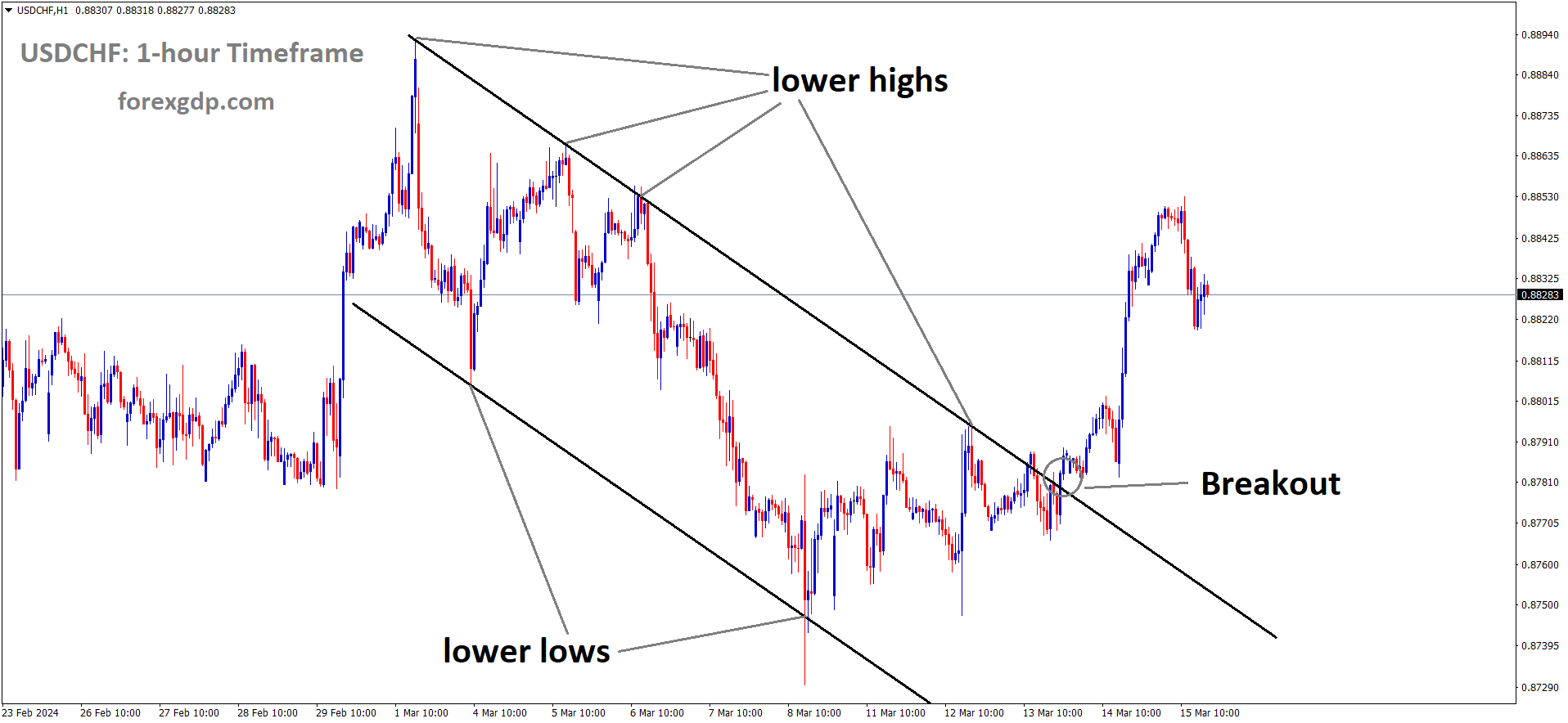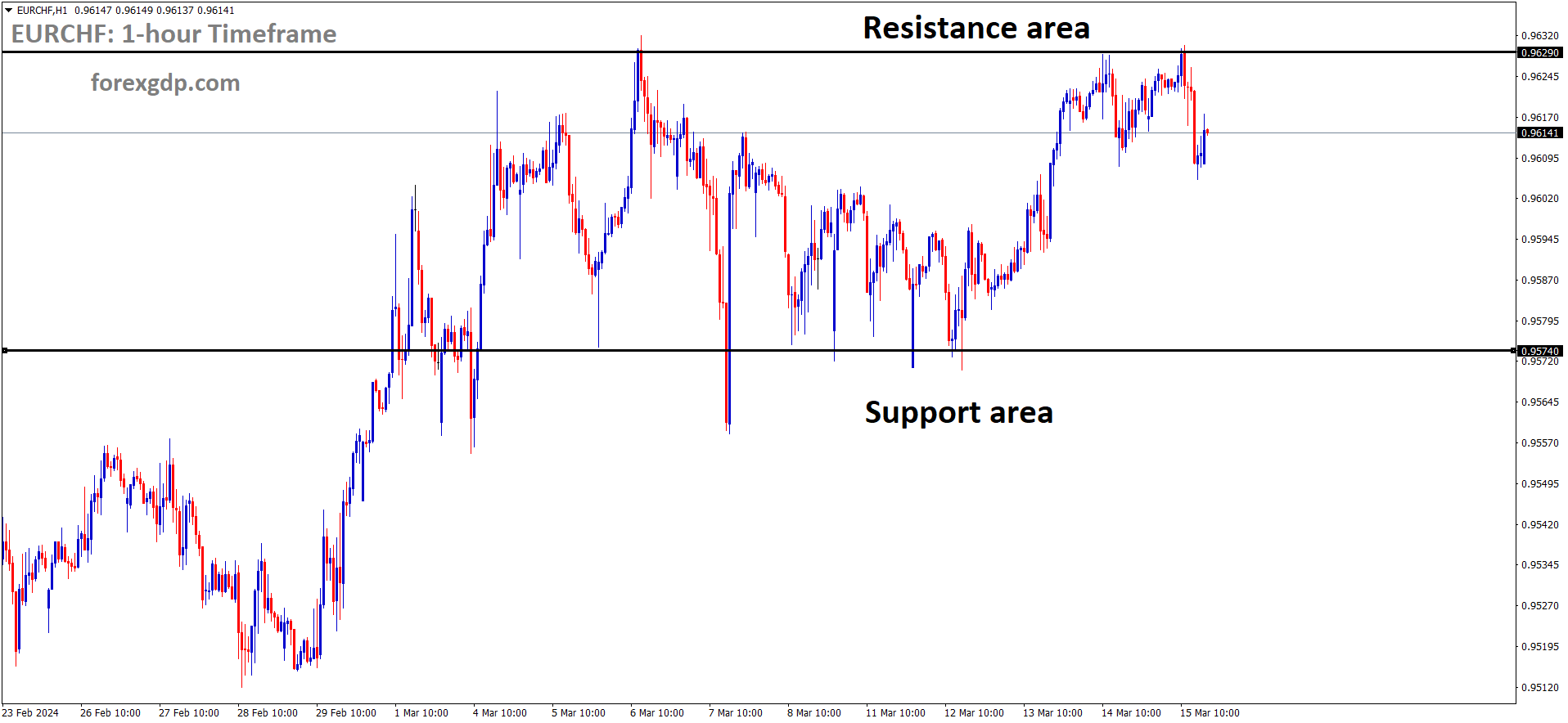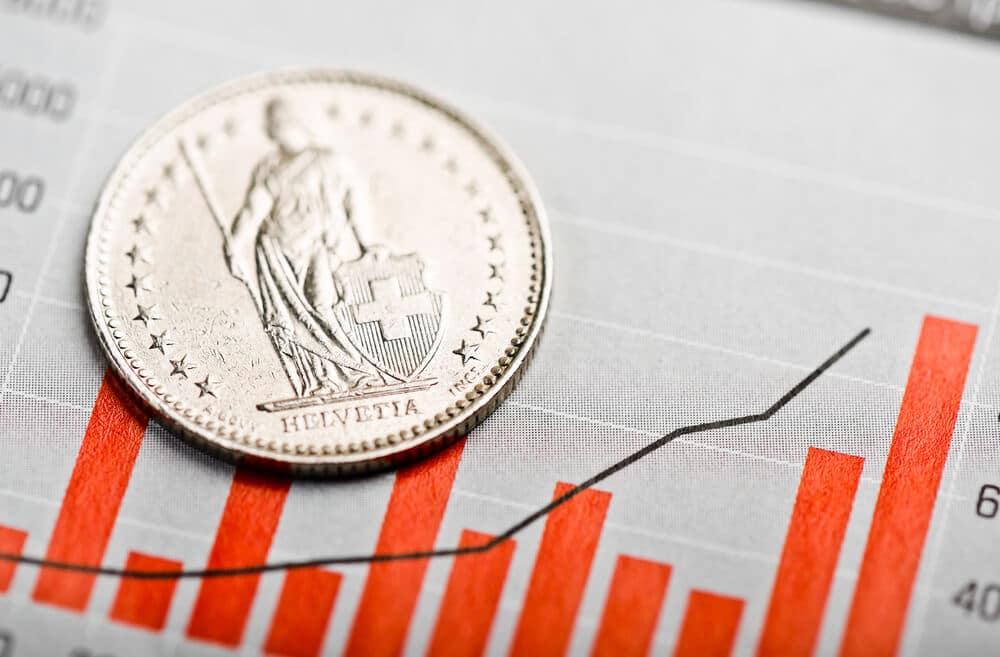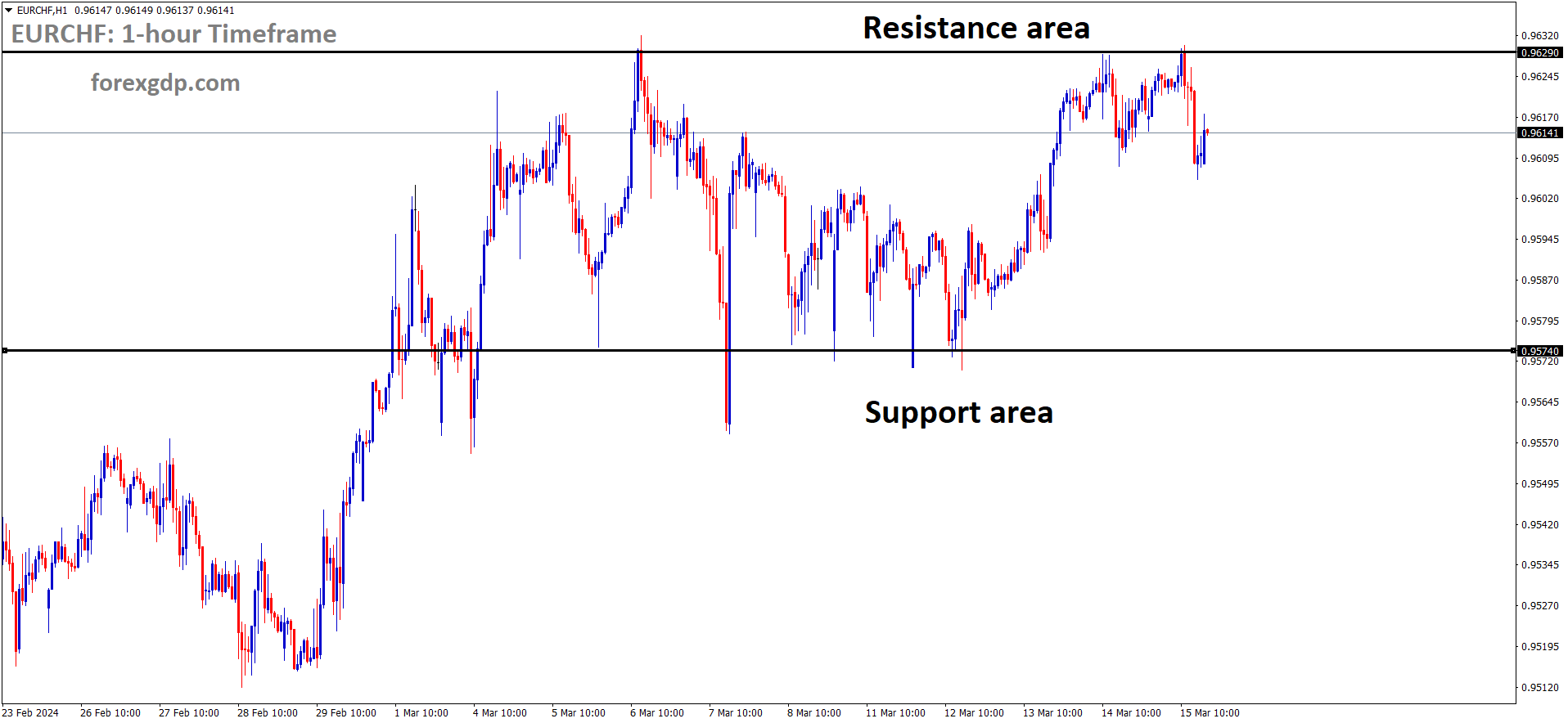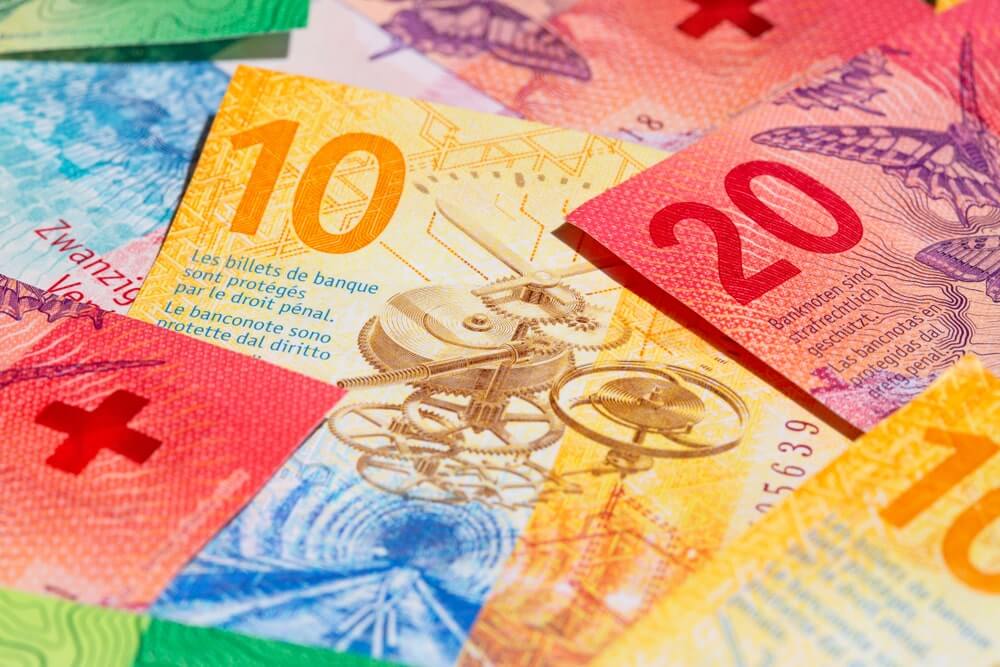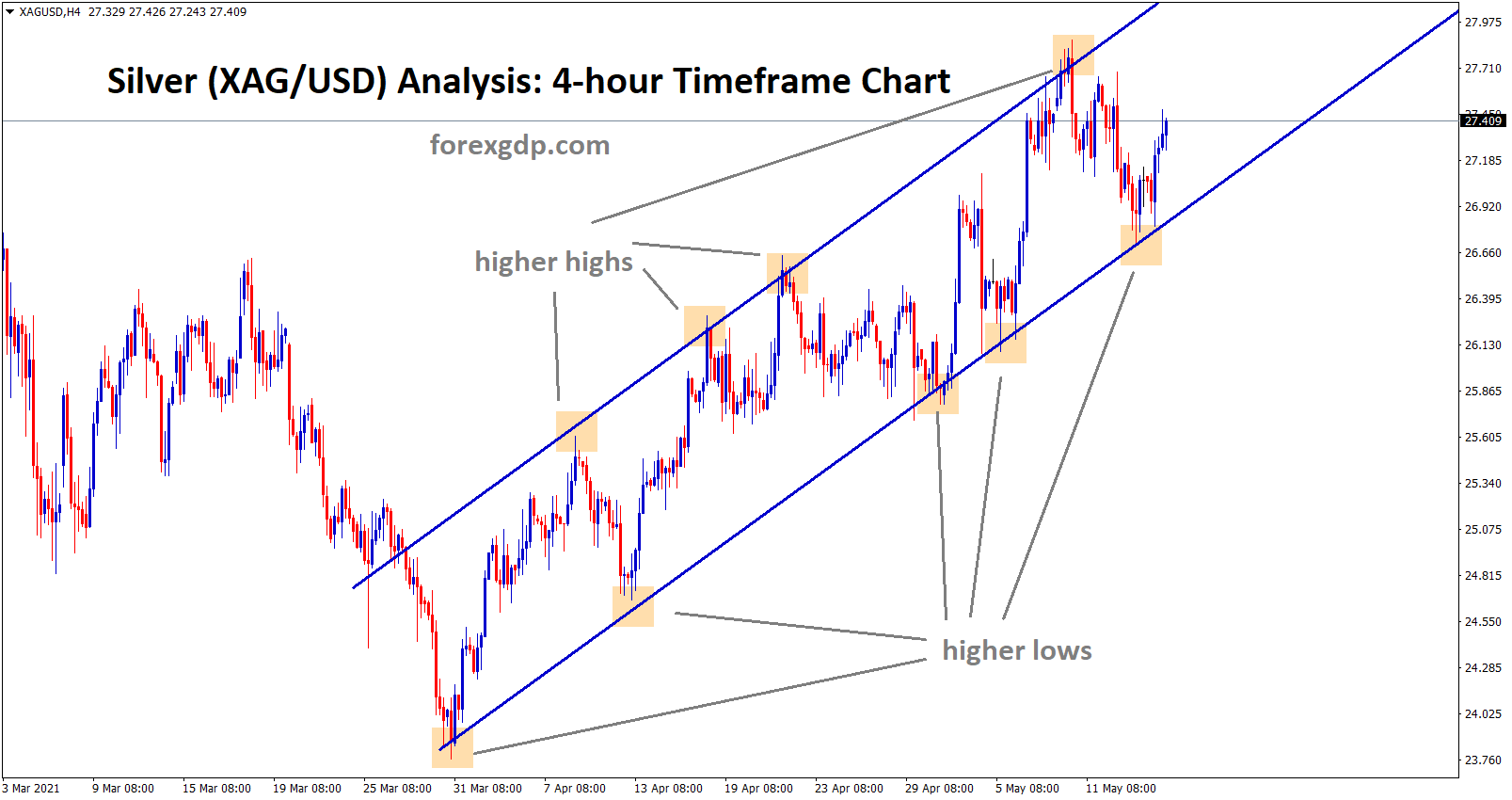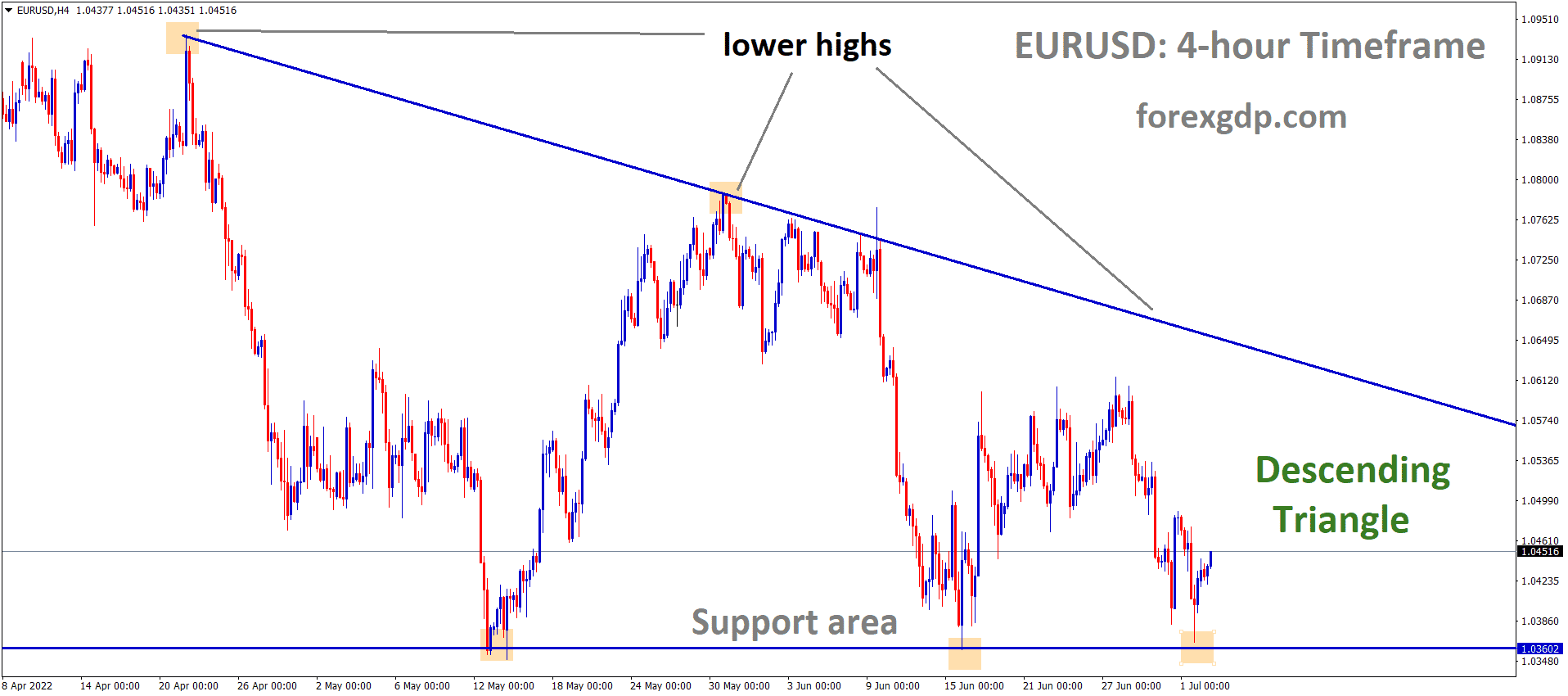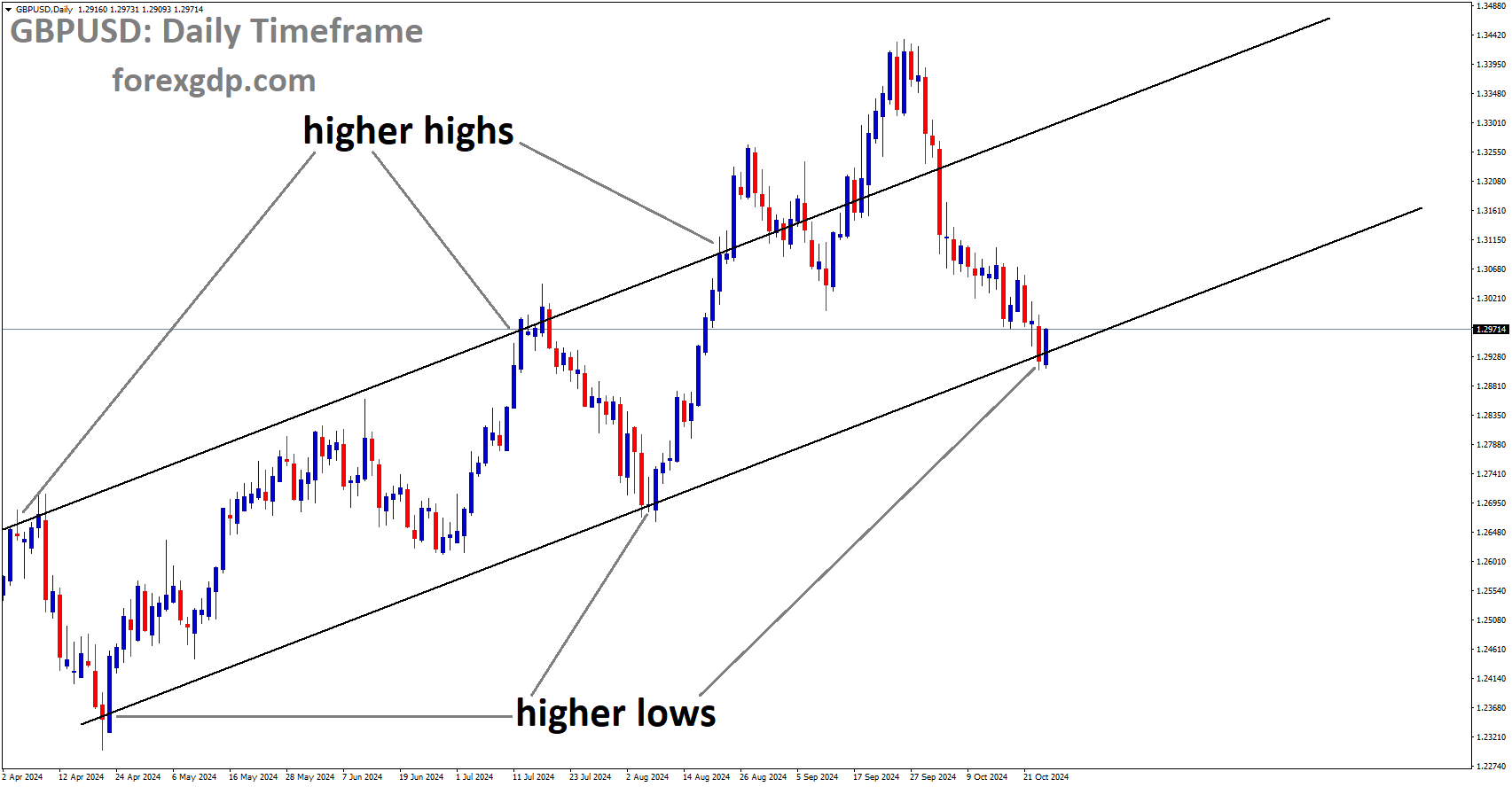Swiss Franc: Swiss Franc at Risk Due to Diverging Inflation from SNB Forecasts
The Swiss Import and producer prices came at -2.0% February month, it is the tenth consecutive decline in the import prices. January month shows -2.3%. This data shows less inflow of Foreign capital to Switzerland due to higher prices of Swiss Franc against major currencies. So SNB is selling Swiss Francs to depreciate the values of its own domestic currencies inorder to protect the value of exporters in the market. SNB Forecasted 1.9% inflation rate in 2024, But now well below the target 2.0% and 1.2% printed in February month.
USDCHF has broken the Descending channel in upside
Swiss Franc Vulnerable as Inflation Diverges from SNB Forecasts
The Swiss Franc remains steady at the close of the trading week, with minimal fluctuations in its major pairs. However, the fundamental outlook for the CHF is concerning, as Swiss inflation continues to fall below official projections. This may prompt the Swiss National Bank (SNB) to consider easing its policy, which typically discourages foreign capital inflows, thus exerting downward pressure on the currency.
Recent macroeconomic data reveals a persistent deflationary trend in Swiss Producer and Import Prices, marking the tenth consecutive month of deflation. Headline inflation in February also fell short of expectations, increasing concerns that it may not reach the SNB’s forecasted levels.
Despite a previous rate hike by the SNB in June 2023 to combat anticipated inflation, the actual inflation rate has declined faster than expected. Consequently, there is speculation that the SNB might opt for interest rate cuts, further dampening the appeal of the Swiss Franc.
With inflation significantly below the SNB’s 2024 forecast of 1.9%, there’s growing anticipation of policy adjustments. SNB Chairman Thomas Jordan has voiced worries about the Swiss Franc’s strength, particularly its adverse effects on Swiss businesses, prompting actions to temper its value, as evidenced by Switzerland’s Foreign Exchange Reserves data showing increased Forex sales in 2024.
Swiss Franc: Swiss Market Closes Slightly Down
The Swiss Import and producer prices came at -2.0% February month, it is the tenth consecutive decline in the import prices. January month shows -2.3%. This data shows less inflow of foreign capital to Switzerland due to higher prices of Swiss Franc against major currencies. So SNB is selling Swiss Francs to depreciate the values of its own domestic currencies inorder to protect the value of exporters in the market. SNB Forecasted 1.9% inflation rate in 2024, But now well below the target 2.0% and 1.2% printed in February month.
Swiss Market Dips Amid Fed Rate Uncertainty
The Swiss market closed slightly lower on Thursday, staying in negative territory throughout the trading session amidst uncertainty surrounding Fed interest rate projections. A larger-than-expected rise in U.S. producer prices in February added to concerns about interest rate trajectories in the world’s largest economy.
EURCHF is moving in the Box pattern and the market has fallen from the resistance area of the pattern
The benchmark SMI concluded down by 0.59% at 11,720.70, after fluctuating between 11,688.35 and 11,779.76 during the session.
Swiss Life Holding dropped by 5.32%, Roche Holding by 3.57%, Kuehne & Nagel by 2%, and Partners Group by 1.03%. Conversely, Lonza Group rose by 2.57%, while Logitech International, Sonova, and Swiss RE gained by 1.71%, 1.58%, and 1.21% respectively. ABB and Richemont also recorded modest gains.
In the Mid Price Index, Meyer Burger Tech plummeted by 14.5% and ams OSRAM AG plunged by 10.1%. SGS ended 3.3% lower, BKW lost about 2.2%, Straumann Holding closed lower by 1.88%, and Avolta settled 1.52% down. Helvetia ended lower by 1.06%.
Economic data from the Federal Statistical Office showed Switzerland’s producer and import prices declining for the tenth consecutive month in February, albeit at a slower rate than in the previous month. The producer price index dropped by 0.3% annually, while import prices saw a sharp decrease of 5.4%.
However, on a monthly basis, producer and import prices edged up by 0.1% in February, attributed largely to higher costs for petroleum and natural gas, while chemical products became cheaper.
The Organization for Economic Co-operation and Development (OECD) forecasted moderate economic growth for Switzerland, projecting a 0.9% growth rate for this year, rising to 1.4% in 2025. Inflation is expected to temporarily exceed 2% in 2024 due to factors such as rent and electricity price increases and changes to value-added tax rates.
Swiss Franc: Swiss Producer and Import Prices Drop by 2.0%
The Swiss Import and producer prices came at -2.0% February month, it is the tenth consecutive decline in the import prices. January month shows -2.3%. This data shows less inflow of Foreign capital to Switzerland due to higher prices of Swiss Franc against major currencies. So SNB is selling Swiss Francs to depreciate the values of its own domestic currencies inorder to protect the value of exporters in the market. SNB Forecasted 1.9% inflation rate in 2024, But now well below the target 2.0% and 1.2% printed in February month.
In February, Switzerland’s producer and import prices continued their downward trend for the tenth consecutive month, as per the Federal Statistical Office’s Thursday release.
Compared to the previous year, February saw a 2.0% decrease in producer and import prices, a slight improvement from the 2.3% decline in the preceding month.
EURCHF is moving in the Box pattern and the market has fallen from the resistance area of the pattern
The producer price index fell by 0.3% annually in February, while import prices saw a notable drop of 5.4%.
On a monthly basis, there was a marginal uptick of 0.1% in producer and import prices in February, contrasting with a 0.5% decline in the previous month, marking the first increase in eight months.
This slight monthly increase is primarily attributed to rising costs for petroleum, natural gas, and related products, whereas chemical product costs decreased during the same period.
Don’t trade all the time, trade forex only at the confirmed trade setups.
Get more confirmed trade setups here: forexgdp.com/buy/


